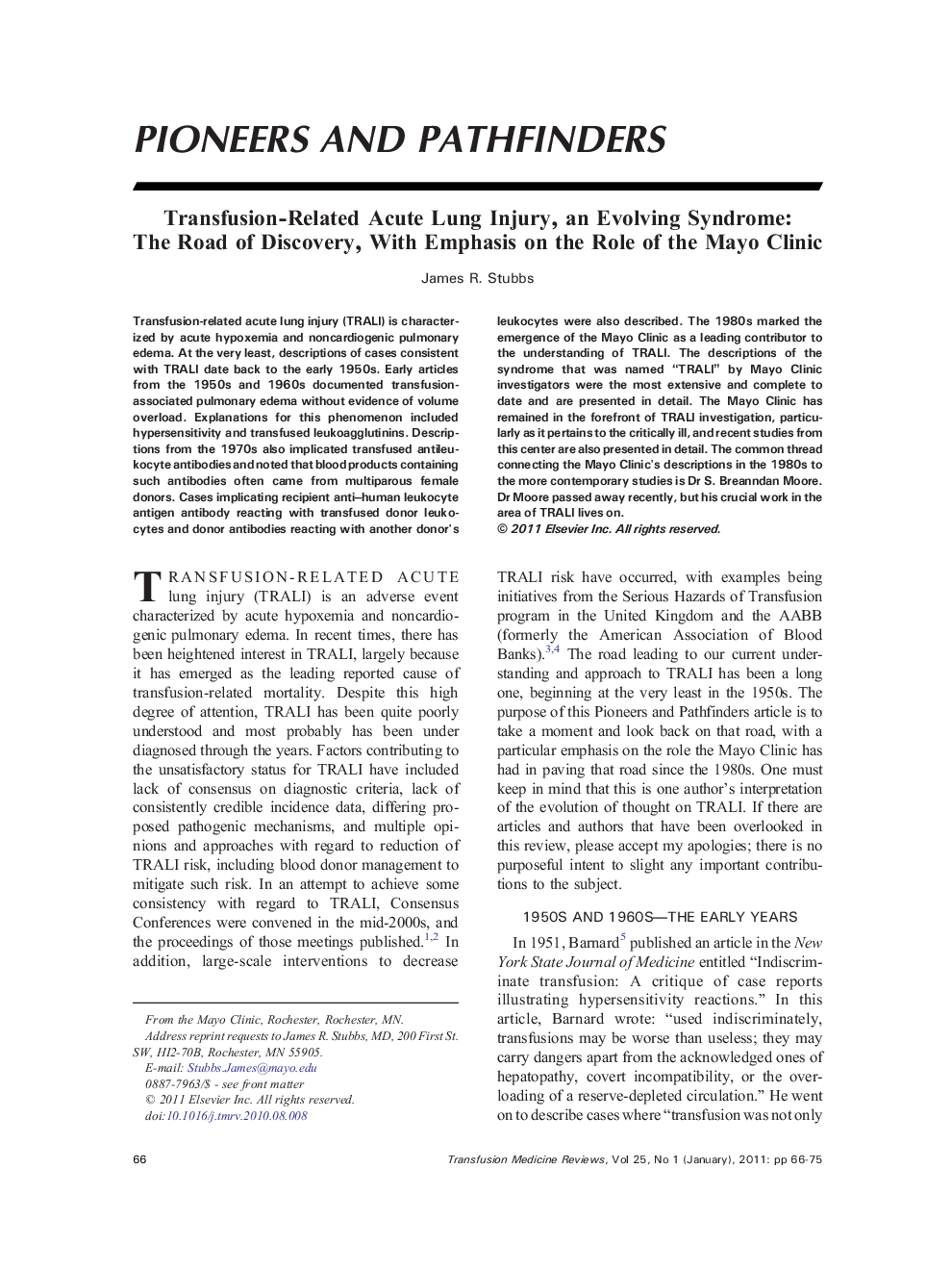| Article ID | Journal | Published Year | Pages | File Type |
|---|---|---|---|---|
| 3336935 | Transfusion Medicine Reviews | 2011 | 10 Pages |
Abstract
Transfusion-related acute lung injury (TRALI) is characterized by acute hypoxemia and noncardiogenic pulmonary edema. At the very least, descriptions of cases consistent with TRALI date back to the early 1950s. Early articles from the 1950s and 1960s documented transfusion-associated pulmonary edema without evidence of volume overload. Explanations for this phenomenon included hypersensitivity and transfused leukoagglutinins. Descriptions from the 1970s also implicated transfused antileukocyte antibodies and noted that blood products containing such antibodies often came from multiparous female donors. Cases implicating recipient anti-human leukocyte antigen antibody reacting with transfused donor leukocytes and donor antibodies reacting with another donor's leukocytes were also described. The 1980s marked the emergence of the Mayo Clinic as a leading contributor to the understanding of TRALI. The descriptions of the syndrome that was named “TRALI” by Mayo Clinic investigators were the most extensive and complete to date and are presented in detail. The Mayo Clinic has remained in the forefront of TRALI investigation, particularly as it pertains to the critically ill, and recent studies from this center are also presented in detail. The common thread connecting the Mayo Clinic's descriptions in the 1980s to the more contemporary studies is Dr S. Breanndan Moore. Dr Moore passed away recently, but his crucial work in the area of TRALI lives on.
Related Topics
Health Sciences
Medicine and Dentistry
Hematology
Authors
James R. Stubbs,
